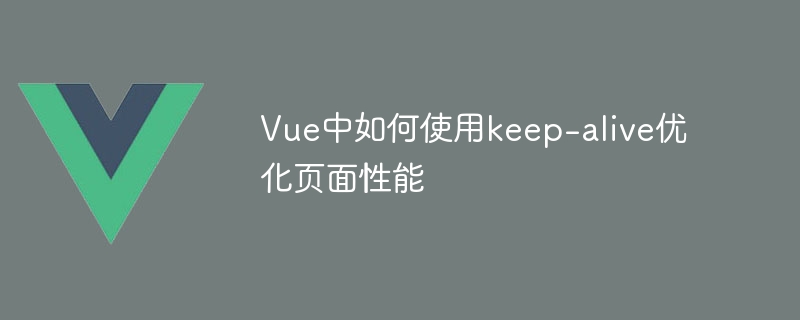

How to use keep-alive to optimize page performance in Vue
In Vue development, optimizing page performance is a very important task. Among them, using Vue's keep-alive component can significantly improve the performance and user experience of the page. This article will introduce how to use keep-alive to optimize page performance and provide specific code examples.
1. What is keep-alive
keep-alive is an abstract component provided by Vue, which can cache components instead of re-creating and destroying them each time. keep-alive has the following characteristics:
2. Use keep-alive to optimize page performance
In App.vue, wrap the components that need to be cached in the
In the above example,
In a component that needs to be cached, you can mark it as a component that needs to be cached by adding the keep-alive attribute. For example:
Home
In the above example, mark the Home component as a component that needs to be cached, so that when switching to other routes and then returning to the Home route, the state of the Home component will be retained.
In addition to caching the entire component, we can also selectively cache components through the cache attribute. For example, only cache components that meet the conditions:
Product
In the above example, the Product component will only be cached when the id parameter in the route is 1 or 2, and will be destroyed in other cases.
3. Notes
The cache quantity of the keep-alive component is unlimited by default, and the maximum cache quantity can be set through the max attribute. For example:
In the above example, the maximum cache number is set to 5. When there are more than 5 cache components, the component that has not been used for the longest time will be destroyed.
Summary: By using Vue’s keep-alive component, you can effectively cache components, reduce memory consumption, and improve page performance. In practical applications, it is necessary to choose an appropriate component caching strategy based on the characteristics and needs of the page.
I hope this article will help you use keep-alive to optimize page performance. If you have any questions, please leave a message to communicate.
The above is the detailed content of How to use keep-alive to optimize page performance in Vue. For more information, please follow other related articles on the PHP Chinese website!